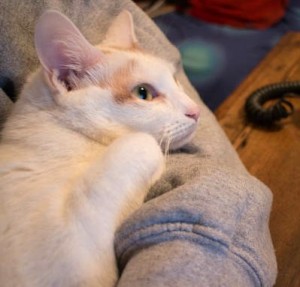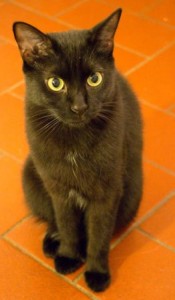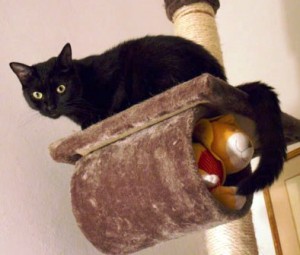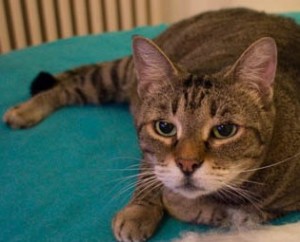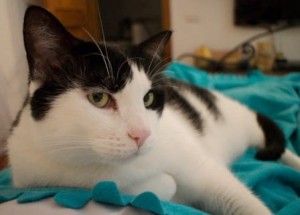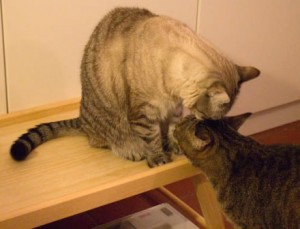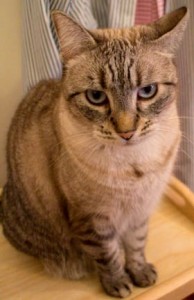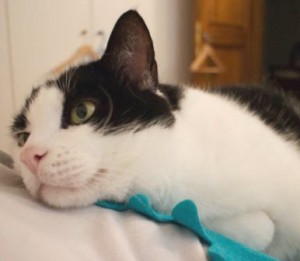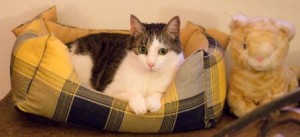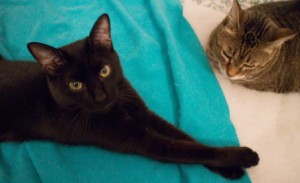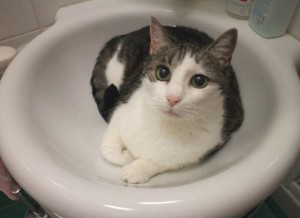Before I begin, I’d like to thank a blog reader (thanks! 🙂 ) for sending me the link to the article I’m bringing to your attention today. In this article, Dr. Steven Vogl, a medical oncologist based in New York City, gives us his thoughts on the Spanish study that has been administering chemo drugs to allegedly “high-risk” smoldering myeloma patients for more than three years now: http://goo.gl/tEYrsT
I’d recommend that you first read the article, then come back and read the rest of this post. It makes more sense to do it that way, methinks, so you are able to put my comments in a proper context. So, go have a read! 😉
A quick note: I would have normally preferred to publish my own considerations on the actual, full study (which I have in my possession, by the way) before publishing an article about it. You know, firsthand versus secondhand…
Yesterday, though, I realized that it’s going to take me a few days to get through the full text, which is one of those super technical, super headache nightmares. I therefore decided to go ahead and publish the link to Dr. Vogl’s critique, which is much (MUCH!) easier to follow…
Now, as many of you know, I’ve written about, referred to and raged against, this Spanish SMM study many times on my blog (for a refresher, just do a search of my blog for “PETHEMA” or “Spanish study”…the “search” box is on the right of this page…Easy peasy.).
Indeed, I’ve always been absolutely appalled that this study, carried out by a group of researchers called PETHEMA, has been allowed to continue in view of the following points (and this is only a partial list):
- About half of the researchers involved are closely tied to the big pharmaceutical company known as Celgene, which makes one of the drugs used in the study.
- The experts themselves cannot agree on how to define “high-risk” SMM, as I pointed out in a relatively recent post (for details, see my Nov 22 2010 post).
- Where’s the data on these smoldering patients’ quality of life or QOL??? (Nowhere!, as confirmed by Dr. Vogl. And in fact, I just checked the full study, and yes the PETHEMA authors openly declare that they did not measure quality of life in their study…Oh sure, who cares about a patient’s QOL? My blood is now dangerously close to the boiling point…grrrrr.)
Okay, now for Dr. Vogl’s article. He begins by asking a very good question: “At what point do physicians decide that a condition in asymptomatic patients is life-threatening and deserves treatment as a cancer?” Ah, the million dollar question…
In “Background,” he brings up a 2007 Mayo Clinic study suggesting that almost half of all smoldering myeloma patients are at high risk for progression. Yikes. (By the way, that is what the PETHEMA group also sustains in the full text…)
In the “PETHEMA study results” paragraph, Dr. Vogl writes, “That ultimate death is allegedly delayed by treatment initiated before the emergence of any CRAB abnormality that traditionally defines the need for treatment in myeloma is big news indeed.” Later on we will see that this result is actually not “big news” at all.
Don’t miss Table 3, by the way. Illuminating.
And then, how extraordinary!, Dr. Vogl compares the PETHEMA study to a Eugene O’Neill play where nothing much actually happens on stage (in “What is wrong with the paper?”), adding that it is potentially “misleading.” Hey, I didn’t say that…Dr. Vogl did! 😉
To him, “phenotypically aberrant plasma cells” simply means that the cells looked “strange” under the microscope. These “aberrant” cells were found thanks to a test, “a four-antibody flow cytometry test,” that was developed in Spain and is not widely available. Now, I don’t know about you, but my impression is that Dr. Vogl sounds a bit distrustful here…but hey, it’s only an impression…
Then we get to the paragraph titled “End point of ‘symptomatic disease’ has little to do with symptoms!” Read it carefully…and reread it, if necessary, as I did. Here we can find some important information: “three of the four “CRAB” criteria are laboratory-based (hypercalcemia, elevated serum creatinine and anemia), and often produce no symptoms if mild.” Food for thought.
Another excerpt: “The paper would be more convincing if all, or even a majority, of the worsening “observation” patients had bone pain or fracture at progression. I suspect only a minority had pain. This matters because deferral of pain is almost always a very good thing, but deferral of mild anemia may, by itself, mean very little. “Deferral of mild anemia may mean very little”? More food for thought.
Then he adds that Dr. San Miguel thinks this is a confusing quibble (personal communication). Apparently, international myeloma committees term any myeloma meeting the “CRAB” criteria “symptomatic,” even if the patient has no symptoms. Perhaps international myeloma committees should defer to the English language and call myeloma needing therapy “real,” or “serious,” or “overt,” or “threatening.”
Dr. Vogl is spot on, in my opinion. If you have no symptoms, how can you be classified as “symptomatic”? Definitions should be precise…So, good point!
In the paragraph “Survival analysis etc.,” Dr. Vogl is surprised at how poorly the untreated patients did in the Spanish study. But then he notes that the survival, after a period of three years, of the “control” (= untreated) patients is similar to that of the myeloma patients in Dr. Vincent Rajkumar’s study with lenalidomide and dexamethasone: 80%. So what seems to be surprising is actually…not surprising at all.
And he adds: “As Dr. Mateos and her colleagues point out, there is no consensus on exactly how to decide which patients with SMM are “high risk.” It does make sense that patients with “high-risk” SMM—especially when the high risk is based on cytogenetic abnormalities—should develop “high-risk” overt myeloma when “CRAB” criteria are met. If this is correct, then it is not so surprising that the early death rate for the “high-risk” SMM patients on observation is so poor, since they presumably go on at a high rate to develop rapidly progressive overt myelomas that are resistant to treatment.”
So the seemingly high-ish death rate in the “observation” (untreated) group fits in with what we would expect.
Please read carefully what he says about the survival difference between the two PETHEMA smoldering myeloma groups, treated and untreated. For example, three of the deaths were related to complications from the treatment…and one other death was “sudden.” I can’t help thinking: would those folks be alive today had they not been in that study?
He also notes that “the survival difference depends on a small number of events” (here he is referring to the survival difference between the two groups). Don’t you think, as I do, that he sounds dismissive, here?
And at the end of Table 4 he writes: “If therapy for overt myeloma continues to improve, the benefits from asymptomatic smoldering myeloma therapy may disappear.” Now, here he seems to be on the verge of saying (again, in my opinion!) that it’s NOT a good idea to treat smoldering patients…at least based on the information and study results currently in our possession.
Well, this is exactly my position, based on years of reading studies showing that there are no benefits whatsoever to administering early treatment to smolderers with no CRAB symptoms (and even then, one must exercise caution). On the contrary, as we well know, early treatment can have an incredibly negative impact on a patient’s quality of life..
Quality of life. That’s a huge issue with me. I mean, what would be the point of prolonging my life (in studies, this is referred to as OS = overall survival) if I’m going to suffer from the consequences of toxic treatments? I’d much rather have a shorter but healthier life. Oh sure, I’m speaking from a privileged position, in the sense that I don’t have any CRAB symptoms, and I can do anything that healthy folks can do…even though I’d almost certainly be considered “high risk” both by the Mayo Clinic and PETHEMA classification systems…and even though, based on statistics, I should have progressed to symptomatic myeloma at least three years ago…
Speaking of quality of life, check out the subsequent paragraph on Tolerability and Toxicity. Excerpt: “Quality of life should be totally intact while the disease smolders—essentially by definition—so it will take a lot of really good-quality days later to make up for any of those sacrificed to a toxic therapy for SMM.” Indeed.
For me, the fact that QOL was not measured in this study (or in most if not all studies, come to think of it!) invalidates the study results. I’m not interested in “overall survival” if that survival means that I can’t go to Skokholm and see my puffins anymore. I’m not saying that is the case with these SMM patients…Fact is, we simply don’t know how any of them are doing (I hope, of course, that they are all doing incredibly well…). What we DO know is that some patients in the “treatment” group had to leave the study due to strong adverse effects. And a few died of complications from the treatment, as mentioned above…
Okay, let’s wrap this up. One of the most important aspects of this article is that here we have a medical oncologist (not just someone with a Ph.D. in Romance Langs and Lits, that is…yes, yours truly) bringing up some of the issues that I’ve brought up in many blog posts. And when a medical oncologist begins questioning the methods used in, and the results of, a study, it’s time to pay attention…
Incidentally, I was all caught up in Dr. Vogl’s critical commentary until I reached the end of the article, which threw me for a loop. Boom! Suddenly Dr. Vogl writes that there should be MORE of these “early intervention” smoldering trials…BIGGER ones, in fact.
Whaaaat???
That makes no sense! I mean, it’s like first proving that someone has committed a terrible, brutal crime, and then commenting: “oh well, what he did isn’t so bad after all.” 😯
I shared my perplexities with my blog reader, and he agreed that the final paragraph seems to jar with all of Dr. Vogl’s previous points. According to my blog reader, perhaps Dr. Vogl felt that, after such a strong critique, he needed to soften the blow for his Spanish colleagues, so to speak. Ahhhh, who knows…But I’d be curious to know if any of you noticed that, too…?
My final point is: we don’t need any more of these blasted, toxic SMM trials. Based on current information, we know that there is absolutely no rationale for early treatment…Case closed.
What we (MGUS and SMM folks) instead need is to focus on the NON-TOXIC things that have been blatantly ignored and even pooh-poohed until very recently (well, for the most part, they are STILL being ignored/pooh-poohed!), such as diet and scientifically-backed supplementation…and even innocuous things such as having a positive attitude…
At the time of a MGUS or SMM diagnosis, we need more from our doctors. Much more. We need more positivity. We need to be told, “you could try this, you could try that…It may not work, but why not try it? It’s non-toxic, so it can’t hurt you, but it might really help…”
That’s what we really need…
